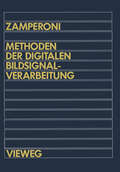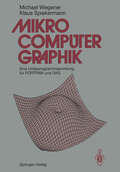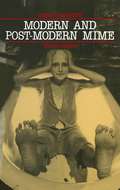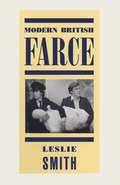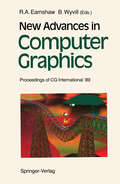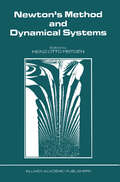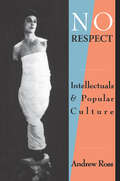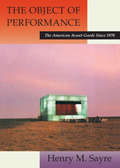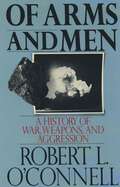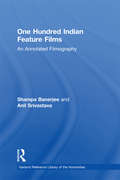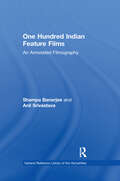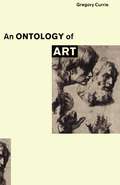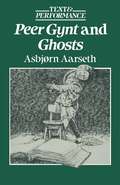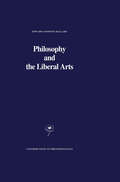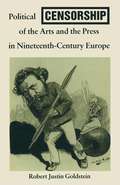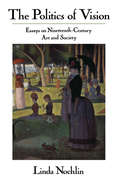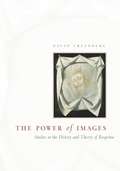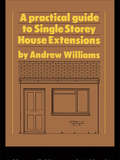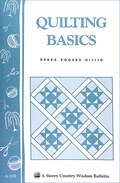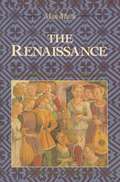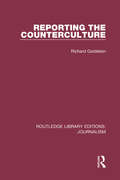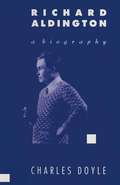- Table View
- List View
Mikrocomputer-graphik: Eine Unterprogrammsammlung für FORTRAN und GKS
by Michael Wegener Klaus SpiekermannIn diesem Buch wird eine Sammlung von Unterprogrammen zur Erzeugung von Graphiken für wissenschaftlich-technische Aufgaben auf einem Mikrocomputer mit Hilfe der Programmiersprache FORTRAN und des Graphikstandards Graphical Kernel System (GKS) vorgestellt. Hauptziel bei der Entwicklung der Unterprogrammsammlung war es, mit einfacher Hardware und geringem Programmieraufwand detailreiche Graphiken für wissenschaftlich-technische Zwecke herstellen zu können. Zur Benutzung der Unterprogrammsammlung genügt deshalb ein Mikrocomputer vom Typ IBM-XT/AT mit HERCULES-Monochrom-Graphikkarte und einem Matrixdrucker mit neun Drucknadeln. Alle Unterprogramme werden im Quellformat aufgelistet und ausführlich erläutert sowie in Demonstrationsprogrammen vorgeführt. Hierdurch kann der Leser ihre Arbeitsweise nachvollziehen und erhält einen Einblick in die Technik der Graphikprogrammierung. Die Darstellung wird durch eine weitgespannte Palette von Anwendungsbeispielen abgerundet.
Modern and Post-Modern Mime (Modern Dramatists)
by Thomas LeabhartModern mime, which has emerged as a major creative art form in the last ten years has its roots in the theatre work of Jacques Copeau in Paris in the 1920s. Copeau looked for a remedy to the ills of the theatre of his day by turning to the golden ages of Greek theatre, the Noh and Kabuki, and commedia dell'arte. Here Copeau found an emphasis on the expressive potential of the actor's whole body, rather than just the voice. In this study Tom Leabhart examines the contributions of Etienne Decroux, Barrault, Marceau and Lecoq to the development of this exciting new form (which often overlaps with new trends in theatre, dance and performance art) and which has spawned significant festivals each year in the US, Europe, Australia and South America.
Modern British Farce: A Selective Study of British Farce from Pinero to the Present Day
by Leslie SmithA study of the popular modern dramatists and the continuity of the farce tradition from Pinero to Travers, the Whitehall team and Orton which examines and questions some of the common assumptions about its nature. Farce techniques are shown to be increasingly used in serious drama.
New Advances in Computer Graphics: Proceedings of CG International ’89
by Rae Earnshaw Brian WyvillThis volume presents the proceedings of the 7th International Confer ence of the Computer Graphics Society, CG International '89, held at the University of Leeds, UK, June 27-30, 1989. Since 1982 this confer ence has continued to attract high-quality research papers in all aspects of computer graphics and its applications. Originally the conference was held in Japan (1982-1987), but in 1988 was held in Geneva, Switzerland. Future conferences are planned for Singapore in 1990, USA in 1991, Japan in 1992, and Canada in 1993. Recent developments in computer graphics have concentrated on the following: greater sophistication of image generation techniques; advances in hardware and emphasis on the exploitation of parallelism, integration of robotics and AI techniques for animation, greater integ ration of CAD and CAM in CIM, use of powerful computer graphics techniques to represent complex physical processes (visualization), advances in computational geometry and in the representation and modelling of complex physical and mathematical objects, and improved tools and methods for HC!. These trends and advances are reflected in this present volume. A number of papers deal with important research aspects in many of these areas.
No Respect: Intellectuals and Popular Culture
by Andrew RossThe intellectual and the popular: Irving Howe and John Waters, Susan Sontag and Ethel Rosenberg, Dwight MacDonald and Bill Cosby, Amiri Baraka and Mick Jagger, Andrea Dworkin and Grace Jones, Andy Warhol and Lenny Bruce. All feature in Andrew Ross's lively history and critique of modern American culture. Andrew Ross examines how and why the cultural authority of modern intellectuals is bound up with the changing face of popular taste in America. He argues that the making of "taste" is hardly an aesthetic activity, but rather an exercise in cultural power, policing and carefully redefining social relations between classes.
No Respect: Intellectuals and Popular Culture
by Andrew RossThe intellectual and the popular: Irving Howe and John Waters, Susan Sontag and Ethel Rosenberg, Dwight MacDonald and Bill Cosby, Amiri Baraka and Mick Jagger, Andrea Dworkin and Grace Jones, Andy Warhol and Lenny Bruce. All feature in Andrew Ross's lively history and critique of modern American culture. Andrew Ross examines how and why the cultural authority of modern intellectuals is bound up with the changing face of popular taste in America. He argues that the making of "taste" is hardly an aesthetic activity, but rather an exercise in cultural power, policing and carefully redefining social relations between classes.
The Object of Performance: The American Avant-Garde since 1970
by Henry M. SayreSayre defines for the first time the apparently diffuse avant-garde art of the past two decades in terms of its distinctly postmodern concerns. The range of arts discussed here encompasses contemporary dance, photography, oral poetics, performance art, and earthworks. "Sayre has written one of the most intelligent, sensible, and readable accounts of the tenents of Postmodern artmaking published to date."—Jeff Abell, New Art Examiner "No one can read The Object of Performance without gaining a far better idea than before of what has happened to art, and, in some measure, why. . . . I find this book consistently illuminating."—Arthur C. Danto
Of Arms and Men: A History of War, Weapons, and Aggression
by Robert L. O'ConnellThe appearance of the crossbow on the European battle field in A.D. 1100 as the weapon of choice for shooting down knights threatened the status quo of medieval chivalric fighting techniques. By 1139 the Church had intervened, outlawing the use of the crossbow among Christians. With this edict, arms control was born. As Robert L. O'Connell reveals in this vividly written history of weapons in Western culture, that first attempt at an arms control measure characterizes the complex and often paradoxical relationship between men and arms throughout the centuries. In a sweeping narrative that ranges from prehistoric times to the nuclear age, O'Connell demonstrates how social and economic conditions determine the types of weapons and the tactics used in warfare and how, in turn, innovations in weapons technology often undercut social values. He describes, for instance, how the invention of the gun required a redefinition of courage from aggressive ferocity to calmness under fire; and how the machine gun in World War I so overthrew traditional notions of combat that Lord Kitchener exclaimed, "This isn't war!" The technology unleashed during the Great War radically altered our perceptions of ourselves, as these new weapons made human qualities almost irrelevant in combat. With the invention of the atomic bomb, humanity itself became subservient to the weapons it had produced. Of Arms and Men brilliantly integrates the evolution of politics, weapons, strategy, and tactics into a coherent narrative, one spiced with striking portraits of men in combat and penetrating insights into why men go to war.
One Hundred Indian Feature Films: An Annotated Filmography
by Srivastava BanerjeeFirst Published in 1989. Routledge is an imprint of Taylor & Francis, an informa company.
One Hundred Indian Feature Films: An Annotated Filmography
by Srivastava BanerjeeFirst Published in 1989. Routledge is an imprint of Taylor & Francis, an informa company.
Peer Gynt and Ghosts: Text and Performance (Text and Performance)
by Asbjorn AarsethA study of two of Henrik Ibsen's most impressive and frequently- performed dramatic texts, the dramatic poem Peer Gynt and the concentrated prose play Ghosts, whose appearance caused an uproar when first performed. In the first half of the book, the author pays particular attention to the imagery patterns of Ibsen's language; Peer Gynt is considered in its cultural context, and Ghosts with reference to Ibsen's concept of drama. Recent productions of both plays are considered in detail, including the Young Vic production of Ghosts in 1986.
Philosophy and the Liberal Arts (Contributions to Phenomenology #2)
by E.G. BallardAs this collection of essays demonstrates, over a long career Edward Goodwin Ballard has written on a wide range of topics of philosophical interest. Although the present volume can be enjoy ably browsed, it is not simply a sampling of his writings. Rather, herein Professor Ballard has chosen and organized essays which pertain to the major concerns of his philosophic life. He has long held that the function of philosophy, particularly in a time such as ours, is the discernment and analysis of basic principles (archai) and their consequences. Indeed, in Philosophy at the Crossroads. he recommended focusing upon the history of philosophy understood as the movement of recognizing and interpreting the shifts in first principles as they reflect and determine human change. For Ballard, the study of the history of philosophy, like philosophy itself, is not so much a body of knowledge as an exercise (an art) whiQh moves the practitioner towards social and individual maturity. He holds, along with Plato and Husserl, that philosophy is a process of conversion to the love of wisdom as well as a grasp of the means for its attainment. Throughout his writings, Ballard has maintained that the difficulties of this journey have to do with the limitations of the pilgrim. Human being is perspectival, finite, and inevitably ignorant. Philosophic command and self -recognition reside in the just assessment of the limits of human knowledge.
Political Censorship of the Arts and the Press in Nineteenth-Century
by Robert Justin GoldsteinPolitical Censorship of the Arts and the Press in Nineteenth-Century Europe presents a comprehensive account of the attempts by authorities throughout Europe to stifle the growth of political opposition during the nineteenth-century by censoring newspapers, books, caricatures, plays, operas and film. Appeals for democracy and social reform were especially suspect to the authorities, so in Russia cookbooks which refered to 'free air' in ovens were censored as subversive, while in England in 1829 the censor struck from a play the remark that 'honest men at court don't take up much room'. While nineteenth-century European political censorship blocked the open circulation of much opposition writing and art, it never succeeded entirely in its aim since writers, artists and 'consumers' often evaded the censors by clandestine circulation of forbidden material and by the widely practised skill of 'reading between the lines'.
The Politics Of Vision: Essays On Nineteenth-century Art And Society (Icon Editions Ser.)
by Linda NochlinA leading critic and historian of nineteenth-century art and society explores in nine essays the interaction of art, society, ideas, and politics.
The Power of Images: Studies in the History and Theory of Response
by David Freedberg"This learned and heavy volume should be placed on the shelves of every art historical library."—E. H. Gombrich, New York Review of Books "This is an engaged and passionate work by a writer with powerful convictions about art, images, aesthetics, the art establishment, and especially the discipline of art history. It is animated by an extraordinary erudition."—Arthur C. Danto, The Art Bulletin "Freedberg's ethnographic and historical range is simply stunning. . . . The Power of Images is an extraordinary critical achievement, exhilarating in its polemic against aesthetic orthodoxy, endlessly fascinating in its details. . . . This is a powerful, disturbing book."—T. J. Jackson Lears, Wilson Quarterly "Freedberg helps us to see that one cannot do justice to the images of art unless one recognizes in them the entire range of human responses, from the lowly impulses prevailing in popular imagery to their refinement in the great visions of the ages."—Rudolf Arnheim, Times Literary Supplement
A Practical Guide to Single Storey House Extensions
by Andrew R. WilliamsA guide to tackling the problems experienced in a project of this nature relevant to planning and building control procedures.
A Practical Guide to Single Storey House Extensions
by Andrew R. WilliamsA guide to tackling the problems experienced in a project of this nature relevant to planning and building control procedures.
Quilting Basics: Storey's Country Wisdom Bulletin A-109 (Storey Country Wisdom Bulletin)
by Debra Rogers-GilligSince 1973, Storey's Country Wisdom Bulletins have offered practical, hands-on instructions designed to help readers master dozens of country living skills quickly and easily. There are now more than 170 titles in this series, and their remarkable popularity reflects the common desire of country and city dwellers alike to cultivate personal independence in everyday life.
The Renaissance: From The 1470s To The End Of The 16th Century (Man And Music Ser.)
by Iain FenlonFrom the series examining the development of music in specific places during particular times, this book looks at European countries at the time of the Renaissance, concentrating on Italy. It is to be published in conjunction with a television series.
Reporting the Counterculture
by Richard P. GoldsteinOriginally published in 1989. Richard Goldstein, journalist with The Village Voice since the 1960s, has carefully selected some of his pieces for this book. Covering a varied range of topics (among the rock concerts, experimental theatre, political trials and cultural experiments) he has created a vivid cultural retrospective of a unique period. An introductory essay gives context to the articles and offers an assessment of the "new journalism" that sprang up in the 60s, and the role that journalism played in the social and cultural revolutions of the time.
Reporting the Counterculture
by Richard P. GoldsteinOriginally published in 1989. Richard Goldstein, journalist with The Village Voice since the 1960s, has carefully selected some of his pieces for this book. Covering a varied range of topics (among the rock concerts, experimental theatre, political trials and cultural experiments) he has created a vivid cultural retrospective of a unique period. An introductory essay gives context to the articles and offers an assessment of the "new journalism" that sprang up in the 60s, and the role that journalism played in the social and cultural revolutions of the time.
Richard Aldington: A Biography
by Charles DoyleThis is the first biography of Richard Aldington, contemporary and friend of Ezra Pound, D.H. Lawrence and T.S. Eliot and notable as a poet, translator, editor, novelist, biographer and significant member of the Modernist era. A critical appraisal of his major writings is included.
